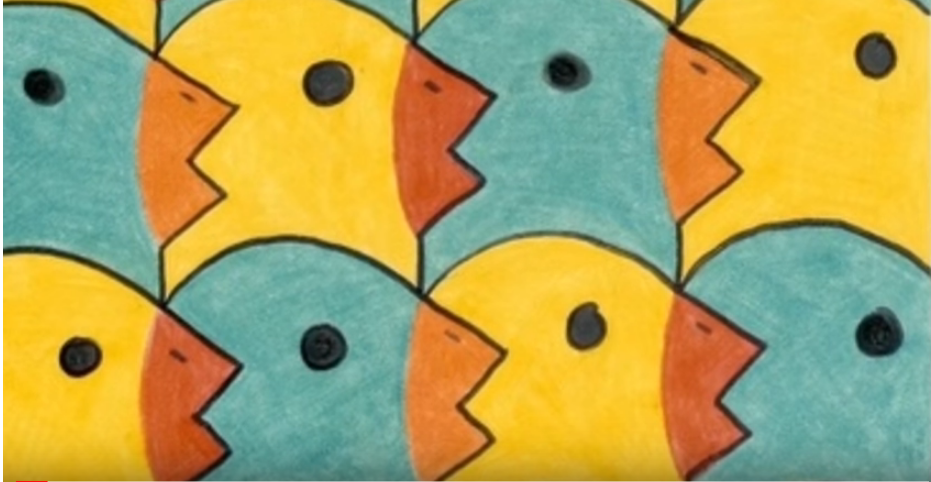

These tessellations do not have repeating patterns. Notice how each gecko is touching six others. The following "gecko" tessellation, inspired by similar Escher designs, is based on a hexagonal grid. By their very nature, they are more interested in the way the gate is opened than in the garden that lies behind it." In doing so, they have opened the gate leading to an extensive domain, but they have not entered this domain themselves. This further inspired Escher, who began exploring deeply intricate interlocking tessellations of animals, people and plants.Īccording to Escher, "Crystallographers have … ascertained which and how many ways there are of dividing a plane in a regular manner. His brother directed him to a 1924 scientific paper by George Pólya that illustrated the 17 ways a pattern can be categorized by its various symmetries. According to James Case, a book reviewer for the Society for Industrial and Applied Mathematics (SIAM), in 1937, Escher shared with his brother sketches from his fascination with 11 th- and 12 th-century Islamic artwork of the Iberian Peninsula.

The most famous practitioner of this is 20 th-century artist M.C.

Escher & modified monohedral tessellationsĪ unique art form is enabled by modifying monohedral tessellations. Alternate colors to create a really cool pattern.A dual of a regular tessellation is formed by taking the center of each shape as a vertex and joining the centers of adjacent shapes. 7) Use your crayons, color pencils or paints to color in each of your objects. If you did the stencil correctly, your outlines should fit together like a puzzle. (Figure 5)Ħ) On your large piece of paper, use the stencil to create a repeating pattern. We decided that the shape in our example would be a flower. What does it look like? Does it look like a flower, a turtle or maybe a frog? Decide what it is going to be. Now you have created a stencil for your tessellation.

(Figure 3)Ĥ) Rotate the pieces so the outer corners (corners marked x on the diagram) touch. (Figure 2)ģ) With scissors, cut along the lines. Again, the line can be straight or squiggly. (Figure 1)Ģ) Draw a line from top to bottom on the index card. Instructions-ġ) With your pencil draw a line from left to right across the index card. Try this tessellation art project at home- Supplies- Index card Large sheet of white paper Pencil Scissors Scotch tape Black marker Crayons, color pencils or paints. Amazing since, as a child, he didn't do well in math class! He even wrote papers on math later in his life. That's a pretty complicated definition for something that looks like it is made out of interlocking puzzle pieces! Escher 49 is an example of a tessellation.Įscher's art is filled with mathematical relationships between shapes, figures and space. A tessellation is composed of a picture or tiles, mostly in the form of animals, which cover the surface of a plane in a symmetrical way without overlapping or leaving gaps. He was also considered the ‘Father' of modern tessellations. Try to figure out which way the people are walking. An example of this can be seen in Relativity. Escher was known for the "impossible structures" shown in his art.


 0 kommentar(er)
0 kommentar(er)
